Ah, curveballs! My employer just acquired two startups. Considering this, I’ve decided that taking six weeks off would not work well, so I’ve dropped out of the SHTP 2025.
Blog
We passed!
Thank you to Dave for coming down to Pillar Point Harbor this morning and taking us through the SHTP inspection. We’re a go with the usual pre-race inspection: comms, water, food. And I need a non expired life raft.
I went up the mast to rig the new fractional halyard. I’ve also put it on a reeving line so it’s not cooking in the sun all day.
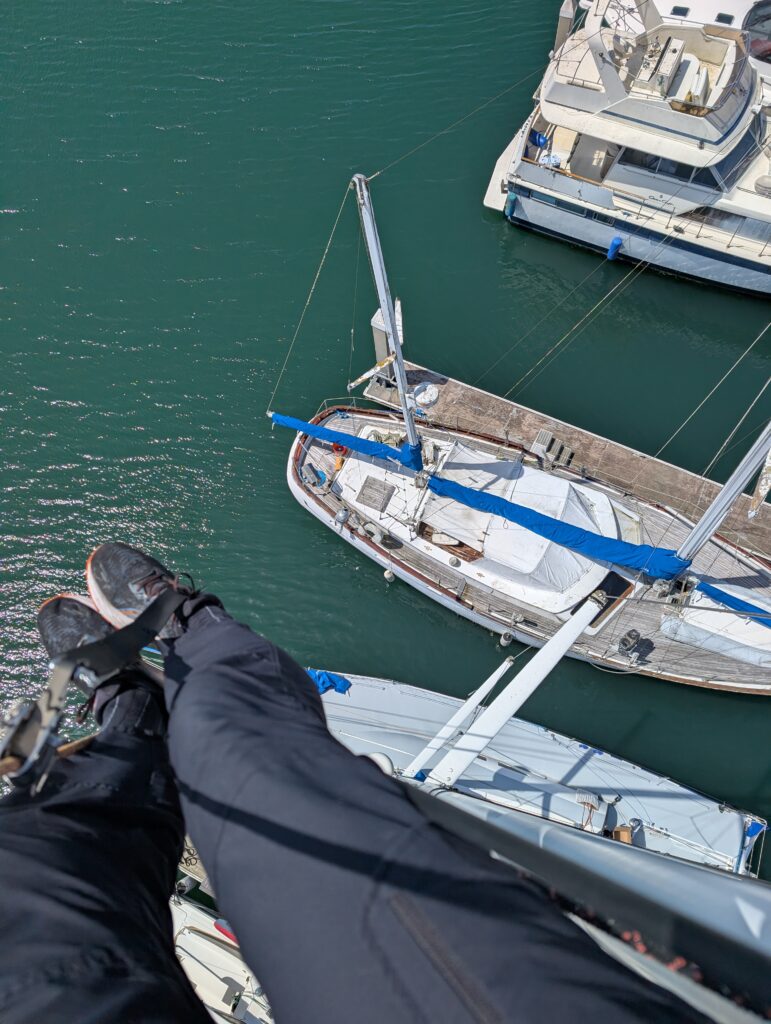
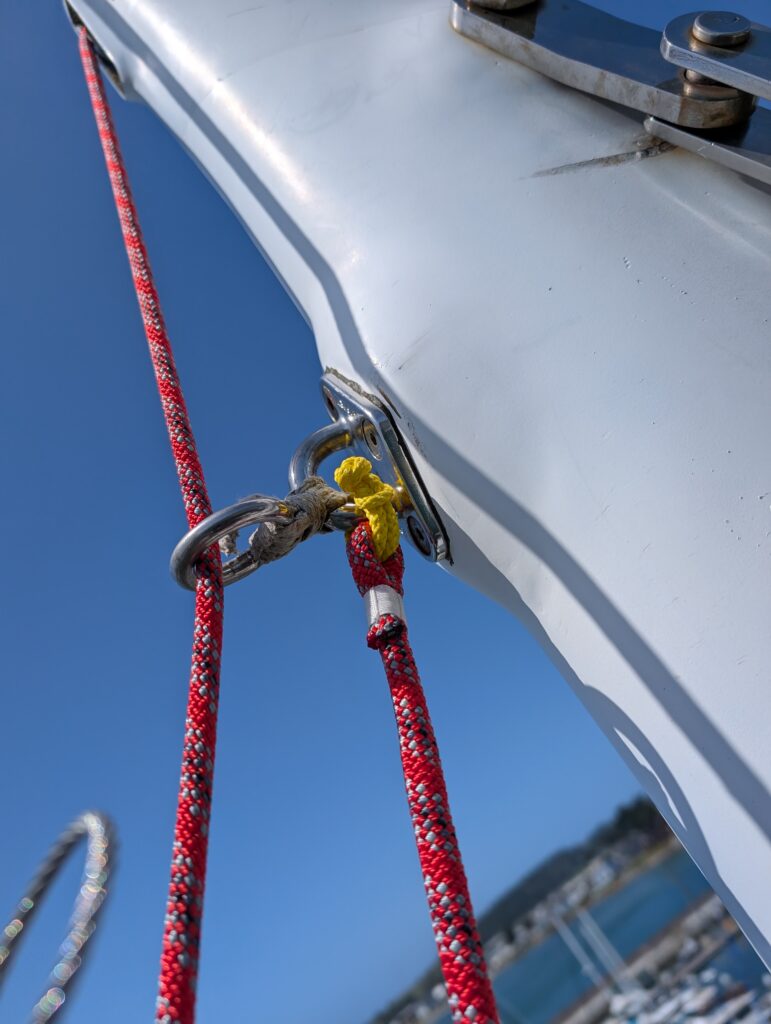
I was planning to rig the spare masthead halyard but I discovered that the sheave is damaged. I’ll have to replace it first.

Hopefully it’ll be easier then when I had to replace the jib sheave!
Quickie
I finally got to try the new-to-me A2. It looks all right. Also, something new today: I hoist the mainsail, and pop! Something hits the deck. I look up and a batten is poking out! I look down and it’s a screw cap for a batten cap. So I turn around, get help at the dock, and put it back in. A few others needed attention, too.
And … we’re qualified!
Finally! Starting a week or so ago, it looked like a weather window was opening up for a qualifying cruise. I prepared during the week in case it held up. It did and so last Friday I packed up and went.

More details here.
There were fields and fields of Portuguese man o’ war so CaB got some. I mean there was one that got stuck one-third the way up the jib?!?
And just like last time (2018 SHTP qualifier), I celebrated with fish and chips.
So … now what?
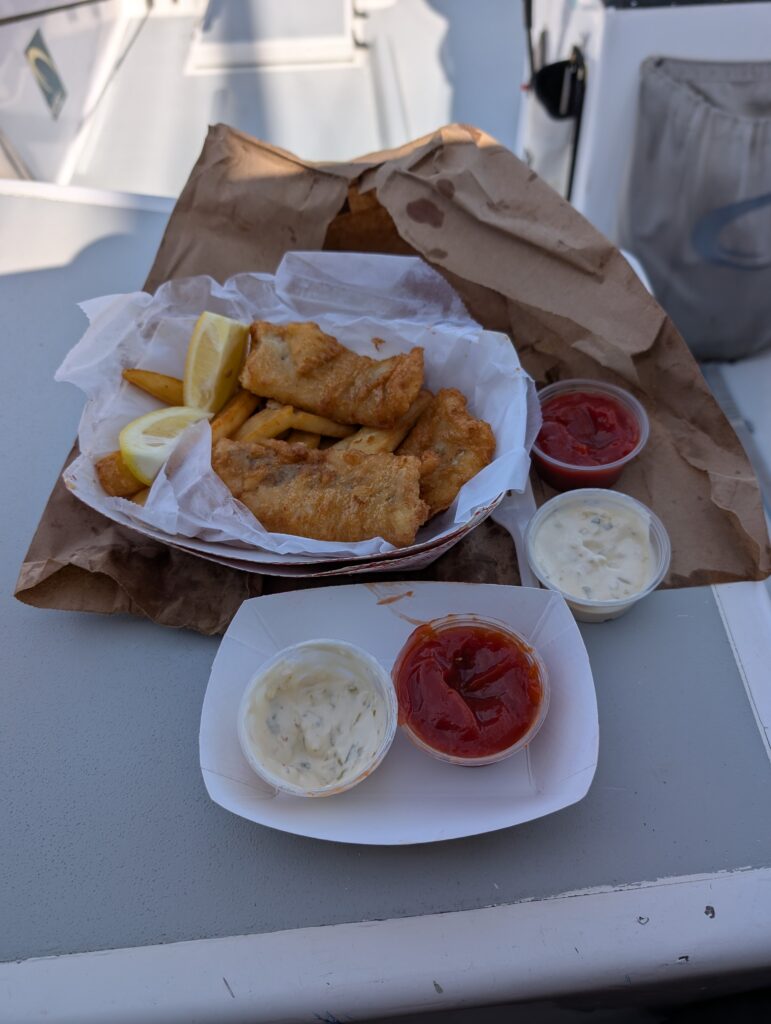
A new to me A2
Changabang came with an A2 asymmetrical spinnaker. If you are familiar with this blog you know it’s “Big”, and you also know how it was thrashed and repaired but was never the same after that. In fact, it was too big for the rig. So for years I have been monitoring web sites for a used A2 (new they cost upward of $8,000). And I finally found one that fit, is priced in my range, and timing worked well as it was in France, just as I was planning to visit my daughter.
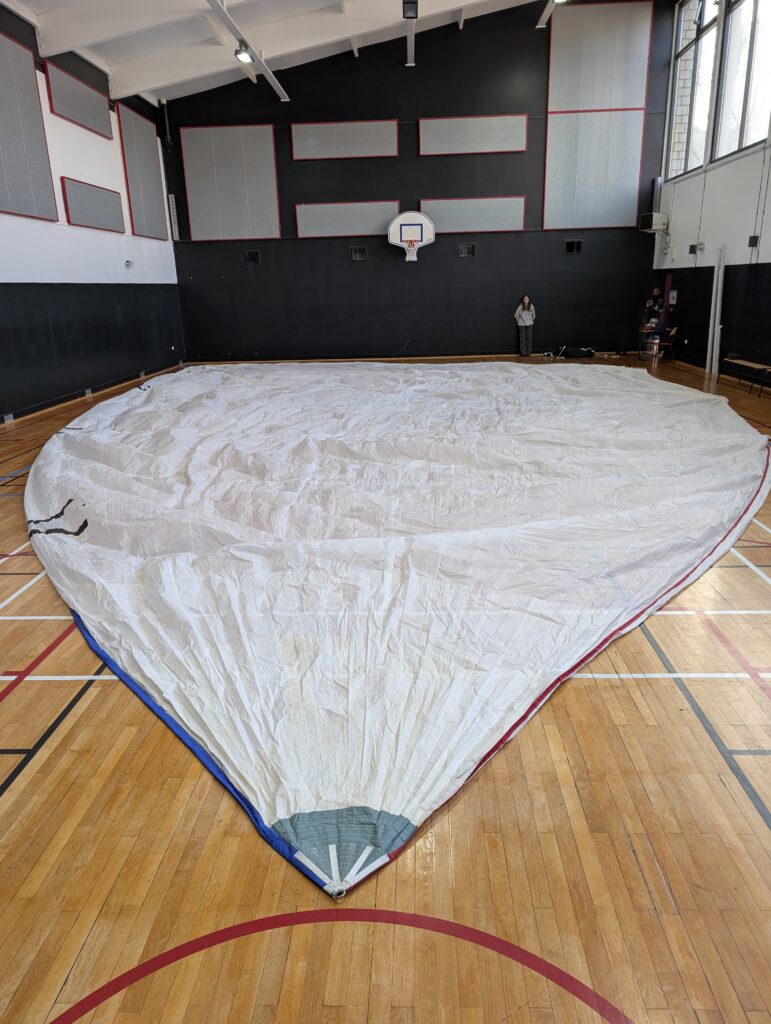
it’s the right size by 1% (it was originally built for #55). Testing will need to confirm that. It’s new from 2019 and was only used a few times. It’s mostly spent its life in storage. It comes with a sock. I’m excited about giving it a go when I’m back. Approximate dimensions:
- Luff 19m 90cm
- Leech 17m 08cm
- Foot 12m 10cm
- Cloth: Superkote 130 and 90
- Sailmaker: sock – Kemp Sails, sail – will need to confirm
I found a gym and packed it tight. My plan is to pack the sail and the sock in a cardboard box and fly home with it. I hope that will work out.
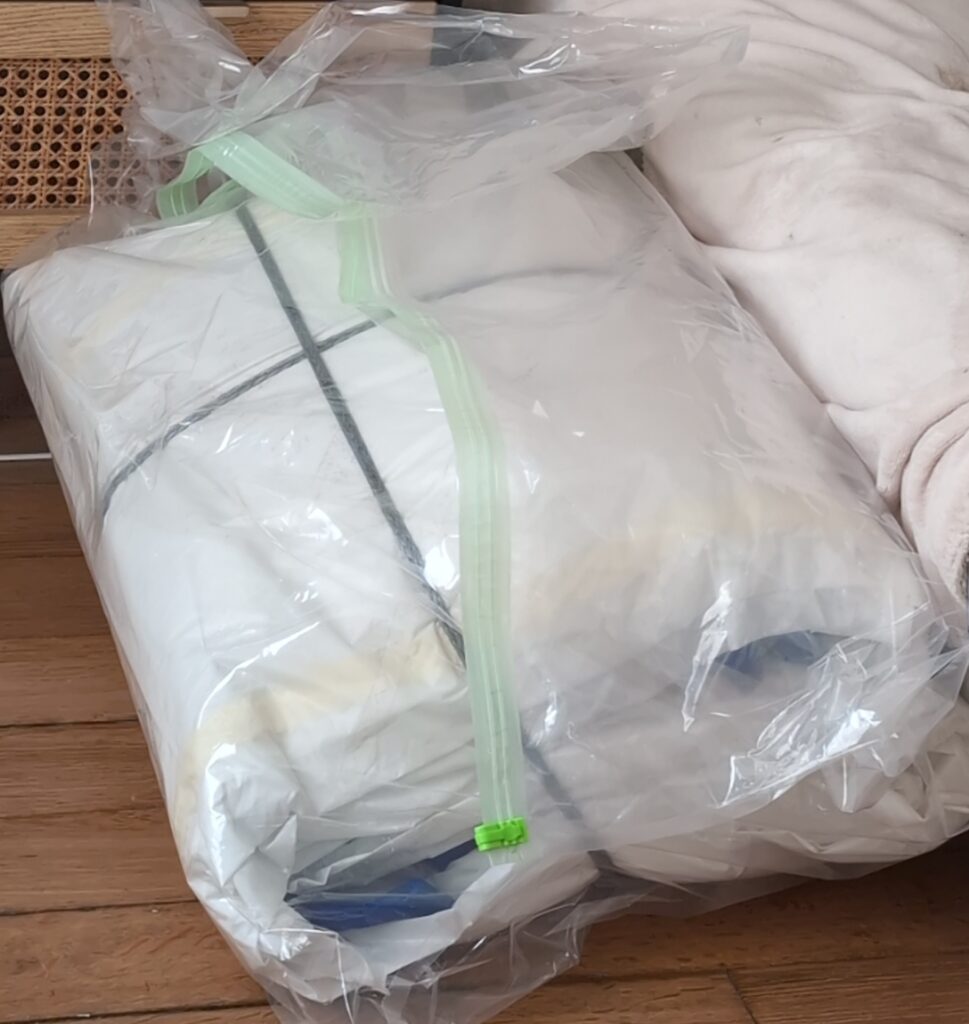
About 60cm by 40cm by 30cm
Suggested use based on a crossover sail chart for an Akilaria RC3:
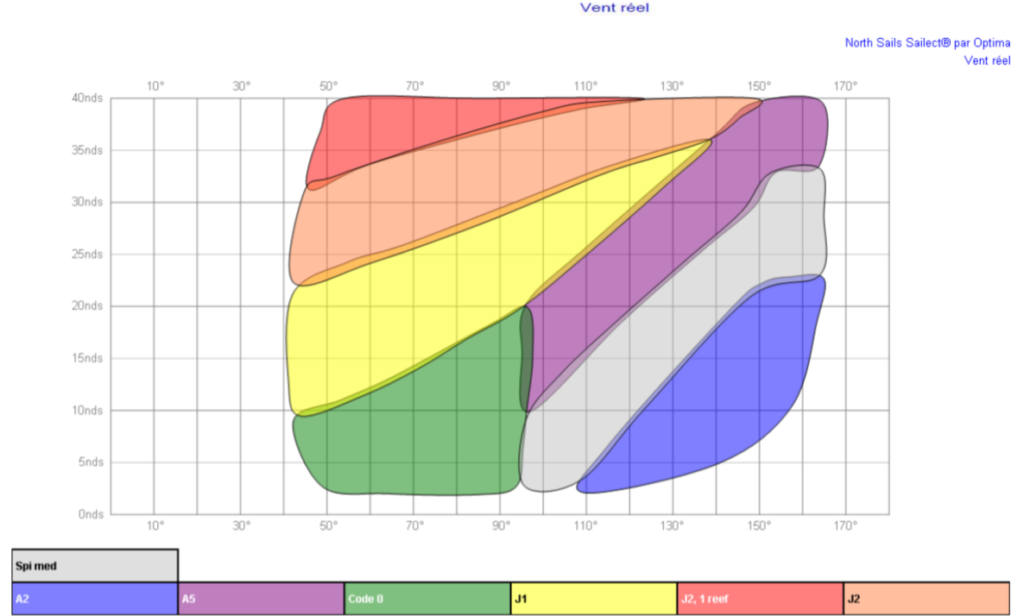
Although it’s only a small area (blue) that may represent a lot of conditions.
Quick update: The plan worked. It cost me $120, as the box weighed 31 kilos. It got home safely! Thanks to Barbamama?

Advienne que pourra
It’s been tough.
I’m trying “distraction” to stay somewhat engaged. By this, I mean that I am acting as if I were going to race in the SHTP 2025. I even started this little thread on their forum.
I’ve been doing bits of boat work and sailing rarely. Most recently, I’ve replaced the boom-end sheaves, and a damaged lifeline, and cleaned the seawater strainer. I’ve ordered parts to service the engine again. Technically I should have the rubber seal for the sail drive replaced fairly soon since it’s on a 7-year cycle and the last change was done in 2017. I think I’m going to stretch this one though.
The biggest blockers for my participation in the SHTP 2025 are:
- Getting my qualifying cruise done: every time I manage to line up 3 days, the weather doesn’t cooperate.
- Getting support at work: they’ll be fine for the way down. But I’m not sure they’ll be happy about the way back. All in all, for me, the best would be to take 6 weeks off.
- Getting myself a liferaft: this one should be easy to sort out as money is all that’s needed here.
- And not the least: being energized. See next …
Like I said, it’s been tough. It’s super unlikely that anyone reads this so I’m going to get personal a bit. The kid left home for college in Paris last September. I moved out of the home to a place in Half Moon Bay. That turned out sour and I’m now in Pacifica, hopefully for the better. My grand plan was that I would find a partner to rebuild my life. But that didn’t work out, not even close. So now I battle loneliness. All friends are essentially my wife’s (well, that’s how it’s turned out). My socialization happens through work (online meetings), soccer games (when I referee), the landlords upstairs, a rare meeting with my wife to discuss the practicalities of the divorce, and that’s it. Not optimal … it grimly highlights my poor social skills, I suppose. And dating is proving to be completely dry.
I wake up, work, eat, work more, exercise or referee a few games, shower, cook, watch TV, sprinkle grocery shopping in there sometimes. On weekends, I call my mom, sometimes I catch my daughter.
The saddest part, I think, is that I feel like my creative juices and energy for living have been sucked out of me. Not completely, but not what it was for sure.
Bleak … I manage and try to enjoy the little things. I mean, f**k, I could have been born in Gaza, Ukraine, afflicted with something. I’m healthy, wealthy. I just need to love myself and life a bit more. WIP …
Back in the sadle, kinda
I went out a couple of days, in lighter wind. I popped the A1.5 up and returned under main/engine. I also refueled last weekend.
That’s all the updates I have. Much going on on the personal front.
Sails
Today was my second visit to CaB since back in HMB. All I did was bring back the A1.5, the flying fish spinnaker, the fractional code 0, the masthead code 0, the gennaker, and the jib top. I also motored out to get the engine going and get some water flowing on the hull, like I did last week. Last week I also rinsed the deck and tightened up the D1 one turn as I noticed that they were slack on the leeward side when we sailed upwind coming back from the repair.
I’m still struggling with what to do next. I did some writing but honestly, nothing is clear. I need to go sailing, that I know. Re-connect with CaB.
Hello Blog!
It’s been more than four months since my last post. A lot of water has gone under the bridge, dirty water. There’s only so much I’d like to put out in the public but suffice it to say that (lucky me!) I had not suffered the kind of experience I went through over the past three months. I know, I know, third-world problems. I don’t mean to say that this was the worse of my life events but this one was just something I had not experienced before.
There’s nothing I can do about it, I’m on the pity potty. Well, more specifically, I’m working my way out. I’m also about $16,000 poorer and have little to show. See that’s what I’m saying … pity potty.
The Bang in Changabang
On March 23rd Changabang was driven on the submerged rocks of Point Cavallo, and I injured my back at the nav table. The boat was hauled out at Svendsen’s Bay Marine for inspection and repairs. The structure was inspected using thermal imaging equipment by Bill Trenkle. No structural damage was identified. The keel bulb needed to be repaired. The battery box inside the boat also needed repairs. All the work was done professionally. The yard took their time to do things right.
I had to re-assemble the cradle as otherwise I’d have been charged hanging fees. A deal was made with BMC (where the cradle had been “stored” since shipped from France) and another one with SBM (to keep it there).
Another poor job
Sadly after sitting out of the water for a week or so, I noticed that the bottom paint was cracking and peeling. This had already been happening in the water; it was not just a matter of the pain drying (it did accelerate the process though). What we discovered is that the previous painters did something wrong (could be the guy who prepared the boat for the RdR, could be the other yard I worked with, I don’t know and SBM was not keen to assign blame). There was some sort of soft layer between the hull and the paint layers.
I opted to have the yard strip out everything and apply three coats of epoxy, and two coats of paint. And just that blew up $10,000.
Engine love
With the boat out of the water, we changed the oil of the sail drive (also replaced the drain plug). Finally, I picked up Changabang last Saturday, motored out the gate, and sailed to HMB with the wind on the nose.
Alex pulled out of the partnership and the PacCup race. So, now, it’s a matter of figuring out what I want to do next. She’s dirty inside and out; there’s tons of gear hanging out everywhere at home. What will we do next, Changabang and I?
First hoist!
It was a light wind day, so trying out the new sails was good. We hoisted both the new jib and the new spinnaker. Alex’s main observation is that the boat is much more balanced under these new sails. I’ll say it is really nice to have sails that were cut for Changabang! I think it’ll take some trial and error to see if we need to make some adjustments to the current setup. I also would like to experiment with stronger winds when CaB is fully powered up. In ocean swell it’s not clear what sort of speed we should be able to achieve. And getting Sylvain aboard to help with trim would be good to. I think with the “new old” main sail we will have a much better arsenal.
I’ve also continued to remove stuff from the boat for our weighing event in March. I brought back home the gennaker, the 2 code O, the jib top, and 2 spinnakers. And there’s still plenty to bring back.
As we were sailing I noticed that the starboard D2 was a little slack when to leeward so I went up and gave it a full turn. I also gave the starboard D1 a turn. I took pictures and traced a line along the mast track as usual. I don’t think it looks worse than it did before. I do feel like there is still a slight bend to starboard.
Last, it looks like the engine is happy as I couldn’t see any leaks. Crossing my fingers that my handy work is holding up.



